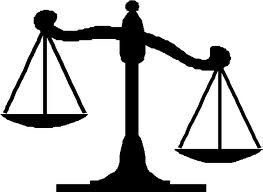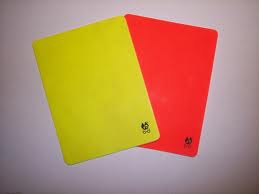I have touched on this topic in some other context in the past, but the Gislason embarrassment (which I wrote about last week) causes me to bring it up again. After a game where Kiel played unbelievably poorly and also were let down by their normally great goalkeeper Omeyer, coach Gislason had the nerve to wonder in public if the EHF had ordered the referees to keep Kiel out of the Final Four. Amazingly, three weeks later there has been no EHF announcement of action taken in response to Gislason’s accusation of fraudulent behavior on the part of the EHF, with the complicity of the referees.
But it appears that a major cause for the anger was that the referees had the audacity to be neutral! They did not follow the example of most referees in ‘home and away’ competition under the jurisdiction of the EHF, i.e., favoring the home team in a ’60-40′ fashion or something in that direction. This past season I have watched around 75 games in the Champions League or in the other EHF Club competitions, live or on a delay basis, using the EHF-TV web casts. So when I say that 60-40 is common and that the home team can count on at least 55-45, then I do have a basis for this statement.
Having spent a long career in the IHF, where most events take place in one country and are decided through individual matches, I have always pondered the contrast with the many EHF events that are based on the ‘home and away’ system. Most of the top EHF games are handled by referees who are also used in IHF events. Yet, there is this blatant difference between refereeing that is reasonably close to 50-50 in neutral locations and refereeing that consistently tends to be 55-45 or 60-40 in favor of the home team in ‘home and away’ games. This difference was clear when I attended the Men’s World Championship in Sweden and also saw many games from the Women’s European Championship on the internet.
Over the years I have had many opportunities to discuss this issue with experts, including coaches, former top referees and psychologists. We know that there are other advantages that come from being a home team: no need for tiring travel, playing in a familiar and comfortable setting, and having the support of a sometimes fanatic home crowd. But is it really unavoidable that a ‘refereeing bonus’ should come on top of these other, legitimate advantages?
Is the pressure so enormous in these games? Are the referees genuinely striving very hard to offer 50-50 but fall victims to a subconscious, unintended bias that comes from the crowd pressure etc? Is it related to the fact that the group of EHF referees that has the experience, competence and confidence to resist pressures and handle very difficult assignments is in fact quite small, smaller than what the EHF really would need for its vast competition activities? Partly this may help explain the problem, but also the recognized top referees have problems of this kind.
Recently I wrote about the suspicion that referees knowingly try to ‘take the easy way out‘ in some game situations where they feel they can get away with this approach because chances are slim that they will be caught. This concerned giving incorrect 7-meters when a defender is in fact standing outside the 6-meter line, not inside, when being run into by an attacker. It also involved the temptation of allowing a goal scored after a foul that caused a player to touch the floor in the goal area before releasing the ball. Here the correct solution would be a 7-meter, but too often a goal is given.
Could it be that the same tendency, in a broader sense, exists in the handling of home/away games?? Is there a view that 55-45 or 60-40 is not just good ‘self-protection’ but also fully acceptable, because in the two games it comes out even? I hope I am wrong in implying that referees may be so calculating, but I am beginning to fear that I am far too often justified in this belief.
The problem becomes acute when there are referees who are determined and able to stick to 50-50 also in ‘home and away’ games. I know that clubs and national teams in Europe know exactly which referees they love to have when they play a difficult away game. And by the same token, these are the referees whom they might prefer not to have at home. My understanding is that the EHF, to some extent, try to assign referees in such a way that, for a given match-up, both matches are handled by ’50-50 couples’ or both matches are handled by referees who might be technically competent but are known to have a 55-45 or 60-40 tendency.
Unfortunately, if the reader innocently wonders why we do not then insist that all referees stick to 50-50 so that we get consistency, I fear the answer is that this would not be realistic. As I noted above, the number of EHF games is so huge and requires so many referees that there is little hope to get to a situation where one could rely exclusively on referees who are strong enough to live up to such an expectation. But at least it might be a step in the right direction if the demands on the referees and, perhaps above all, the evaluation and follow-up of the referees were to be strengthened in this respect.
In the meantime, while the upcoming ‘Final Four’ may not offer an entirely neutral setting for German-Spanish match-ups, it is at least not a ‘home-away’ format. So let us hope that the referees come with a determination to keep all the games under control and with a ’50-50′ objective. In this regard, I am really pleased to see that Gjeding/Hansen, the solid Danish referees who were affected by the Gislason outrage, were promptly given a nomination for a game in the Final Four. Good luck to all the couples!




